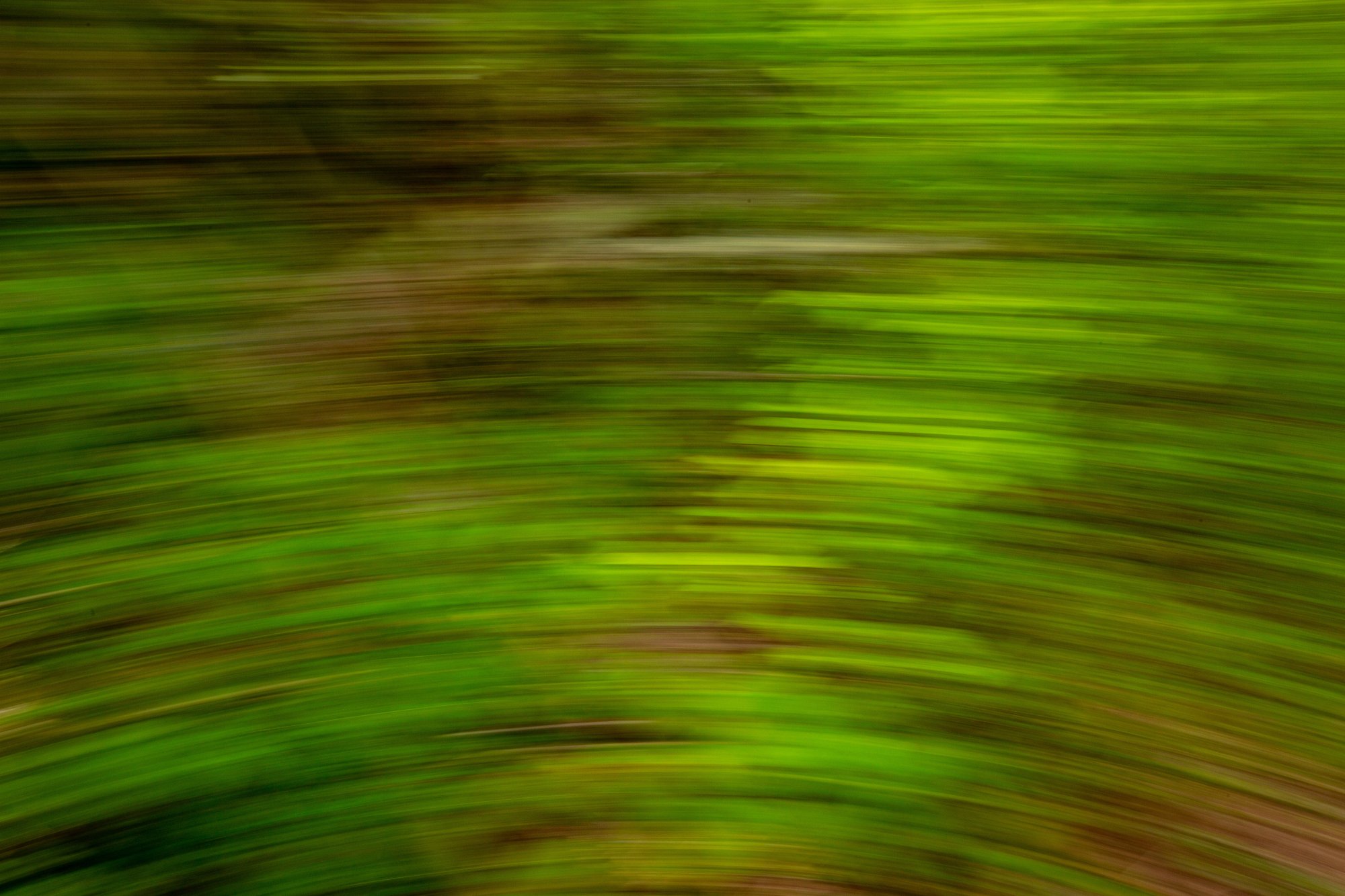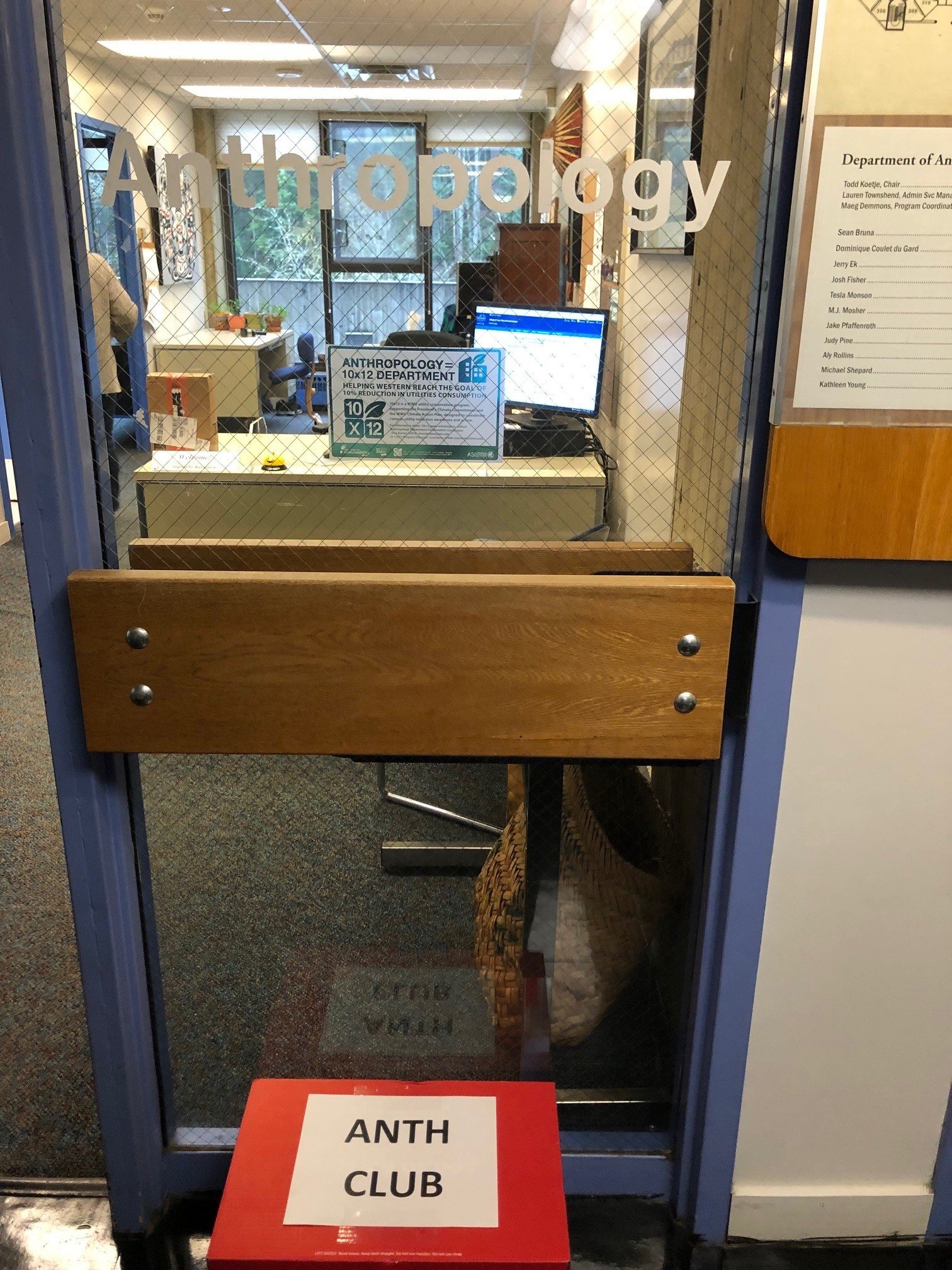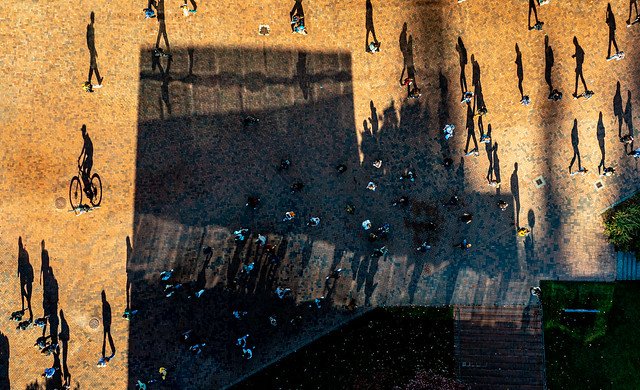Anthropology Newsletter 2023-2024 - Cloned

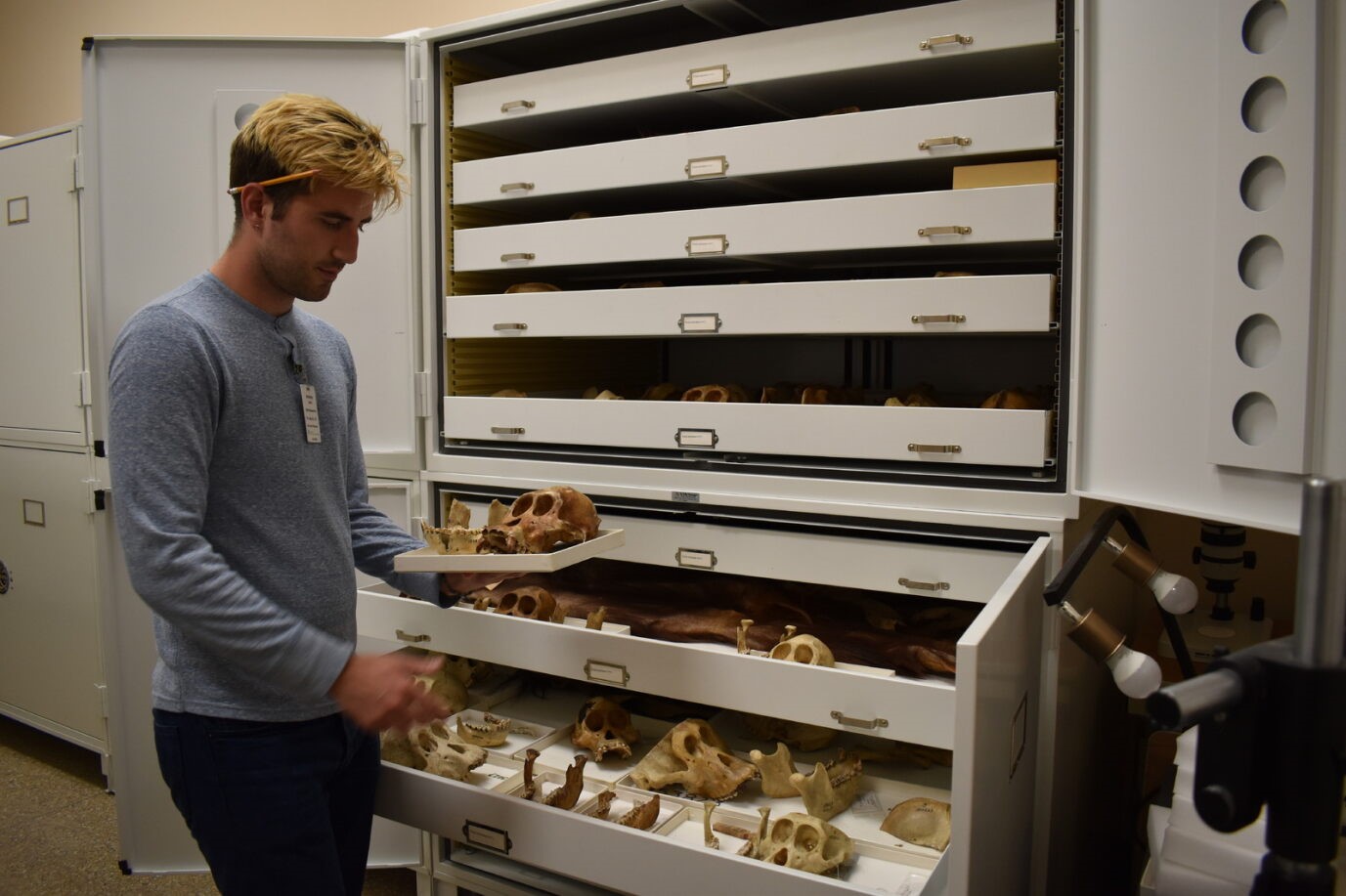
Follow Us

Newsletter Archives
Message from the Chair Judith Pine
Leveling Up: Q&A with Archaeology Senior, Adrena Hamilton
As a former corporate leader, long term volunteer and participant in the US Forest Service (USFS) Passport in Time and field school participant, Adrena Hamilton used her breadth of experiences and archaeology education to make inroads into an archaeology career. Adrena will start in her permanent position as an Archaeology Tech for USFS this summer 2024.

What drew you to the field of archaeology?
Volunteering has been such a central part of where I am at today. I don’t like to go into anything blind, and volunteering is what gave me that insight to know what real-world archaeology is like. I loved field school in Belize, but the USFS program has done far more to prepare me for the next step than just field school alone. There are some forests that even accept volunteer experience as field school experience or even give preference to those who have volunteered. I’m very excited to have the opportunity to work in the same forest that I worked on my first archaeological site, my first excavation, and where I decided to become an archaeologist.
I’ve loved history since I was a child, and archaeology is such a tactile way to explore and experience the past. History is not only written by the winners but the people at the top, and archaeology has the ability to tell the stories of people who can no longer tell it themselves. I think that the more we can make those voices relatable, the easier it is to make change today for those who need it.

Powder House Restoration
What stands out to you from your academic undergraduate experience as particularly useful in the field or workplace?
I love that the anthropology department works together as a whole. The department feels bigger because no matter what the specialization, all of the professors have unique insight in to whatever I am interested in. On a more practical level, rarely does one live in a box when they enter the workforce. Working with other teams and departments is necessary anywhere you go, and sometimes great resources are outside your comfort zone.

Tell us about a project you are especially proud of. What were the highlights and challenges?
When working on a restoration project I hewed a log on my own with a broad ax/broad hatchet. I was in pain for a week, but I have never felt more empowered in my life.
What advice do you have for undergraduates majoring in anthropology?
One of my favorite quotes is by Dave Grohl; “You are you, and that is your superpower.” I have often found that it’s not how well I fill the requirements that puts me over the top, but everything else that I bring to the table. In reality, for any position there are going to be things that teams want to fill that’s not necessarily related to the position, and sometimes they don’t realize they need it until they see it. Most likely there will be many applicants that can do the job, so the deciding factor is what is unique to you. There was a communications internship that I landed not because I had the best portfolio, but because I also came with project management experience. I have hired for positions sometimes wanting experience and sometimes not or had to balance experience with budget. A museum I interned at looks for customer service and camp counselor on the resume because it shows the ability to handle groups of children for several hours. Don’t ever assume that any experience is not relevant. Secondly, mental health is important. I have grinded away for years to make progress, but it was only after I prioritized my mental health that I not only started to get somewhere, but it got easier.
Data Collection at the Smithsonian by Jack McBride, Graduate Student- Anthropology MA
During this past Summer, 2023, I was fortunate enough to travel to the Smithsonian National Museum of Natural History in Washington, DC with my advisor, Dr. Tesla Monson. While there we worked in the Mammal Collection. I was using the Primate Evolution Lab's Artec Space Spider 3D Scanner to scan primate crania and mandibles. I ended up obtaining samples of orangutans and other apes, many leaf-monkeys, and a selection of American monkeys (the last of which I am using in my thesis research). Beyond this experience in museum data-collection, we had access to the exhibits before the museum opened and received tours and instruction from curators in the Mammal Collection.
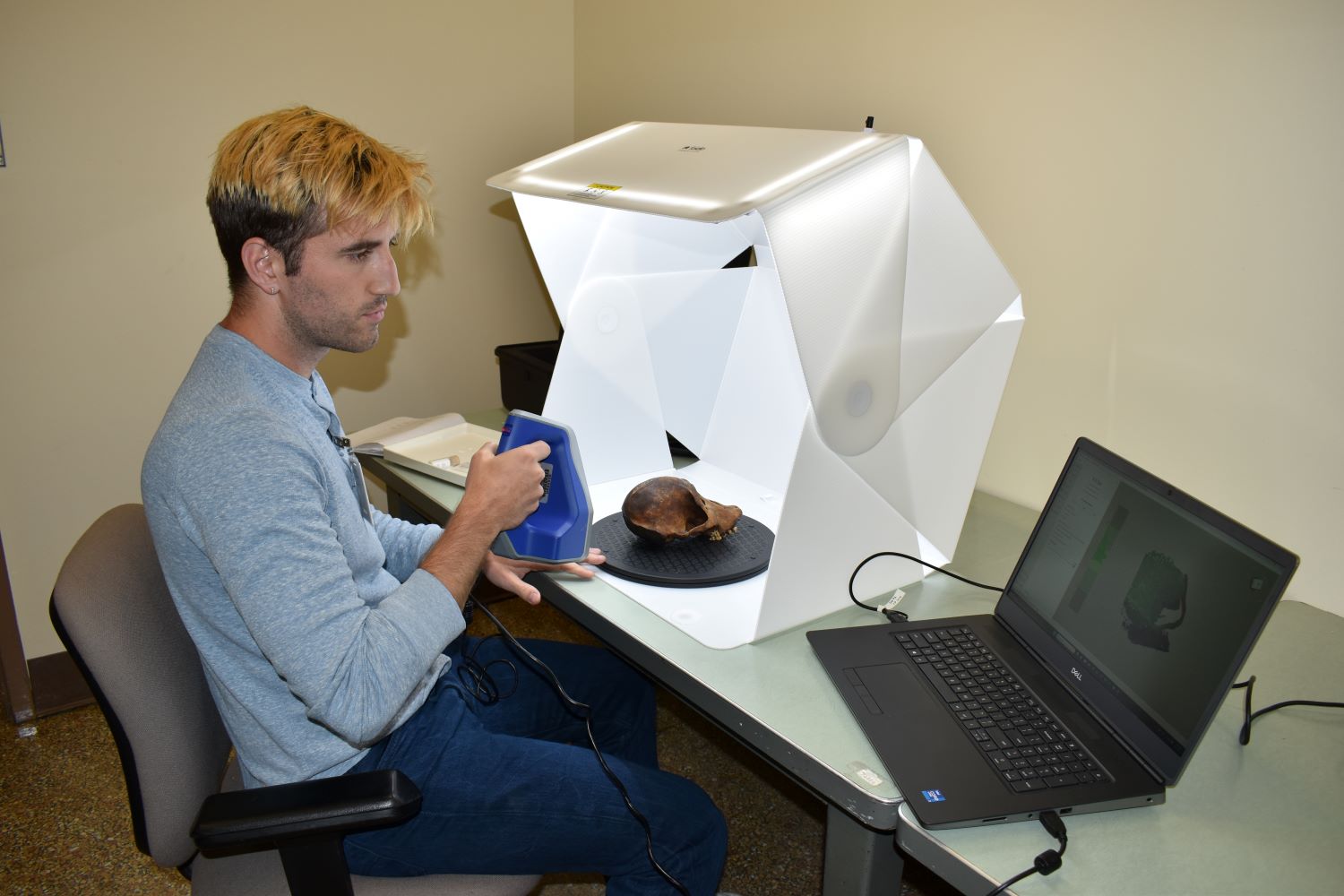

Steps of the Smithsonian
We learned that President Theodore Roosevelt collected a number of the collection's leaf-monkeys (among other animals) on a collection trip shortly after his time in office. I was discussing expeditions with Collections Manager Darrin Lunde, and he told me that many of the samples collected by John Steinbeck (described in his fantastic book, "The Log from the Sea of Cortez") were located on the same floor as the collection where we were working.
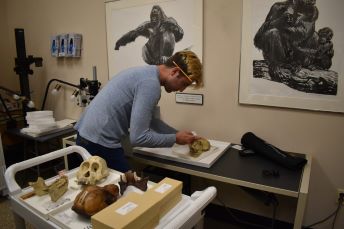
I was also trained in using the Artec Micro 3D scanner and got to meet other early-career academics including a PhD candidate from Johns Hopkins and a Postdoctoral researcher who started at the Smithsonian just a week after we arrived. I had never been to Washington, DC before and I had a great time seeing a new city while learning invaluable skills.
Update to Last Year's Alumni Spotlight:
"I am happy to say I have officially graduated as of last month from Utrecht University (UU), Netherlands, with my MA in Gender Studies! After an intense one-year program I learned so much about decolonization, somatics, intersectional thinking, and critical understanding. My internship concerned helping people in the Netherlands navigate the healthcare system more easily regarding their reproductive health. It has been quite the year!"- Eliza Hortegas, Class of 2021
A Tight-Knit Group of MA Alums: Where are they now?
2016-2017 Anthropology MA alums Tiffany, Katie, Katarina and Marinel maintain connections with each other and emeritus faculty member, James Loucky (who came back to teach Borderlands fall 2023). Professor Loucky reached out to these former students for their updates.
Tiffany Ayala. Since earning her MA, Tiffany Ayala has worked at Lydia Place, a non-profit organization that provides parenting and mental health support for over 400 families in Bellingham. Serving first as housing case manager, and currently as housing director, Tiffany is responsible for managing wrap-around services for any family having one or more children. These include rapid re-housing for emergency situations along with longer-term/permanent housing, in keeping with a basic mission of disrupting the intergenerational cycle of homelessness.
Katie (nee Falwell) Goger is a Licensed Independent Clinical Social Worker (LICSW), working as the Pediatric Social Worker at the Lummi Tribal Health Clinic and in her small private practice in family therapy. She continues to enjoy working with indigenous families at Lummi, where she has been since 2012.
Katarina Gombocz is working towards an endorsement in Multilingual Education through WWU, a founding member of the local group Whatcom Families for Justice in Palestine, and spends time in animal and garden cooperatives with dear friends, practicing with Red Cedar Zen Community, and watching bad reality TV.
Marinel Kniseley has applied her graduate degree from WWU through involvement in a number of research and service projects in southern British Colombia. As research manager at the University of the Fraser Valley, she has coordinated projects relating to impacts of COVID for newcomer community members and farmworkers, as well as options for both long-term and temporary support. Her participatory research also focuses on youth experiencing multiple challenges, such as aging out of services. She exemplifies commitment to involving youth as mentors, having voices and experiences that are invaluable in overcoming common obstacles for turnover and poor outcomes.
Thank you for sharing!
Welcome New Professors!
Dr. Mariangela Mihai is a sociocultural and visual anthropologist and filmmaker whose work builds on decolonial, intersectional feminists, and sensory ethnographic methods to understand Christian Indigenous resistance on the India-Bangladesh-Myanmar borderlands. She served as a Postdoctoral Fellow in Global Media and Film, in the Culture and Politics Program (CULP) at Georgetown, an interdisciplinary program that focuses on questions of power and inequality, globally. Her interdisciplinary and multimodal research, transnational teaching and activism, and long-term commitment to engaged pedagogy and public scholarship have led her to this position, as an Assistant Professor in Anthropology at WWU.
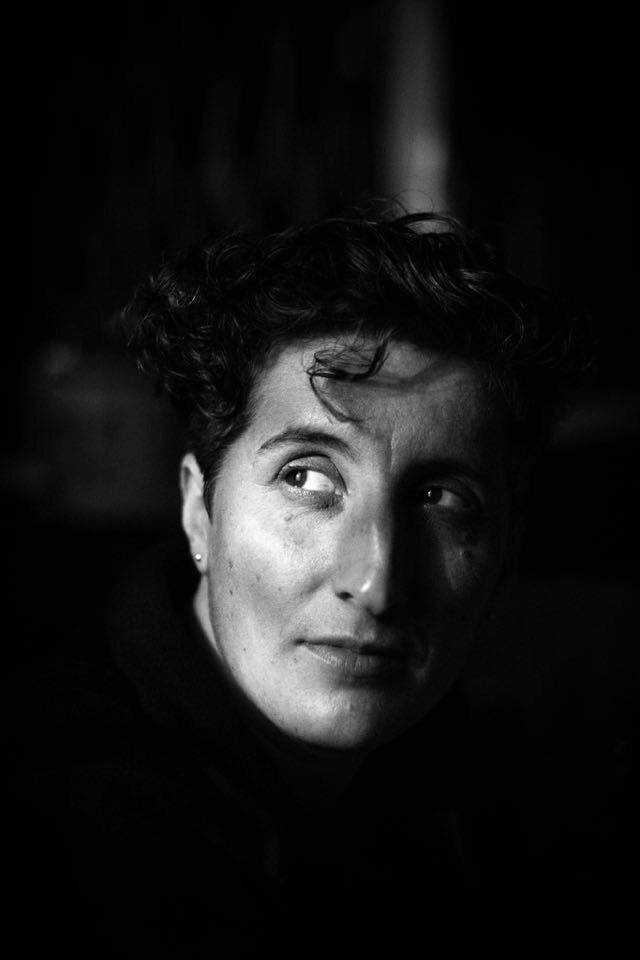
Dr. Marianne Brasil is a biological anthropologist who studies skeletal evolution and variation in humans and monkeys. Her research spans work in the field, museum, and lab to investigate human origins. She is thrilled to be joining the vibrant faculty in the Anthropology Department at Western in the fall of this year, and is excited to work with Western students and welcome them into her lab!

Dr. Jerald Ek (Jerry) is an archaeologist with research interests in community-based participatory research, indigenizing archaeology, human-environmental interactions, and political economy. After spending most of his career focusing on the Maya Lowlands region of Mesoamerica, he has shifted focus to the Salish Sea region.
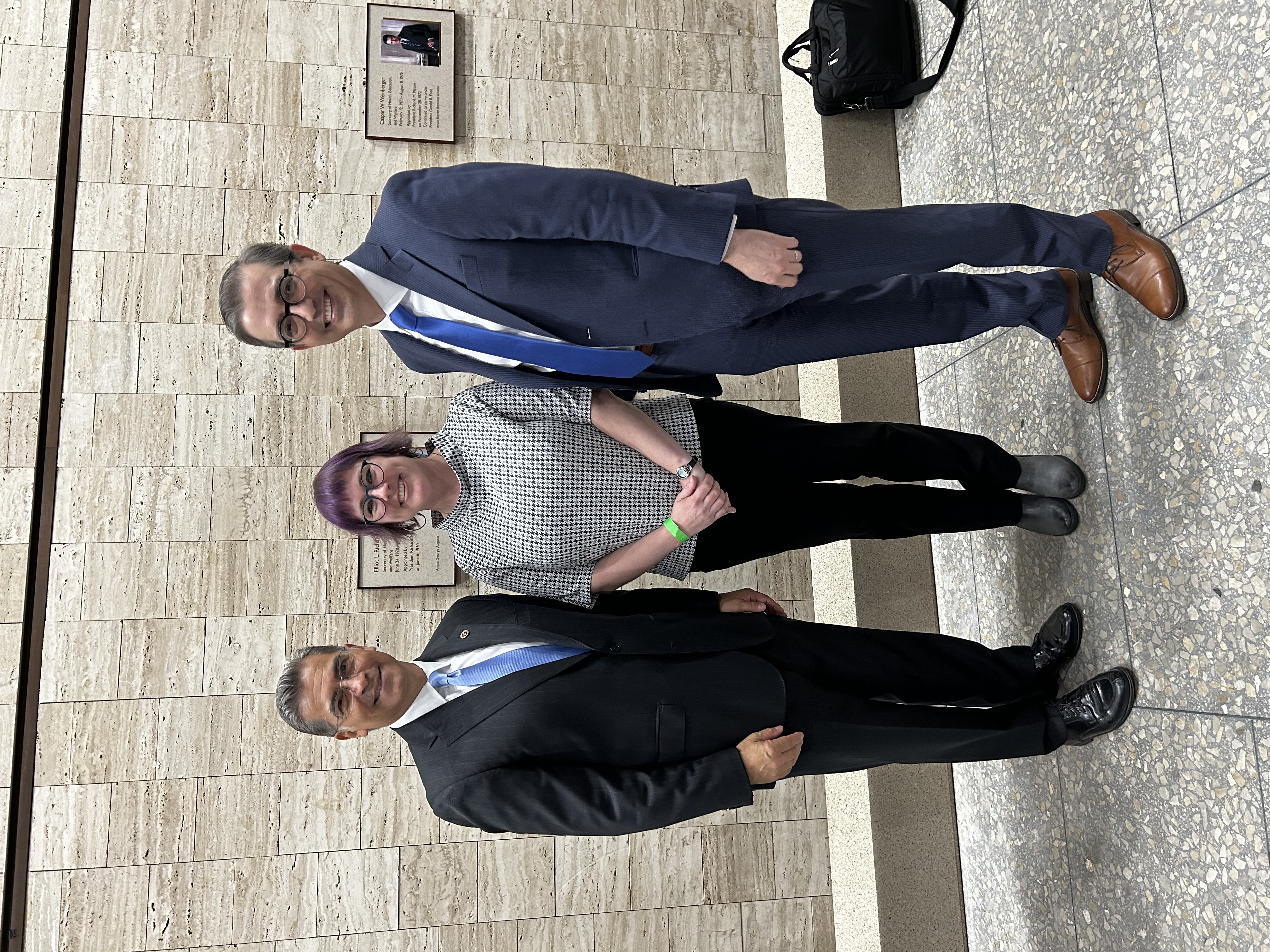
Faculty Spotlight
Dr. Sean Bruna is on leave from Western and accepted a new position as a Presidential Appointee in the Biden-Harris Administration to serve as a Senior Advisor in the Immediate Office of the Director in the Agency for Healthcare Research and Quality (AHRQ) in the U.S. Department of Health and Human Services. In his new role he engages in high-level strategic efforts addressing systemic change in patient safety, broadening understandings of patient experience, aging, and community engagement, among other national priorities.
Photo: Secretary Becerra (Health and Human Services), Dr. Heather Fullerton (Biology Department, College of Charleston), and Dr. Sean Bruna (Anthropology Department, Western Washington University), following Dr. Bruna’s public swearing in ceremony

KZY_A Bit of Department History

Well here we are again! Another year, flown by. Things are finally starting to feel a little more ‘normal’ as we return to face-to-face. It has been such a pleasure to see people in the hallways, engage in a little stop-and-chat, and be able to have students in the lab working with materials. But we certainly miss a few faces! Huge congratulations to more of our faculty who have retired, especially MJ Mosher, my counterpart here in Biological Anthropology. Although we could never replace her, it has been exciting to part of the hiring process for a new Biological Anthropologist. If all goes well, we will have a new faculty member in the Osteology lab next year!
I would also like to introduce two new MA students in the Primate Evolution Lab: Tristen Hansen and Jack McBride. Tristen was actually a BioAnth BS student here at Western – apparently he liked us so much, he decided not to leave! Jack joins us from the UW. We are lucky to have both of them in the Department, and I am excited to work with them on their projects: Tristen is working on the Salish dog collection in the Archaeology lab, and Jack is investigating the evolution of litter size (offspring number) in primates.
The Primate Evolution Lab has also had a great year for research. We were part of an interdisciplinary team at Western that brought in more than $500,000 from the National Science Foundation to buy a new micro-CT scanner for campus (collaboration with Geology and Environmental Sciences). I was also awarded a Pilot Grant from Western to visit the primate skeletal collections at the University of Oregon. I spent a week there over the summer, 3D scanning lots of monkeys and meeting with faculty and graduate students. More recently, I was awarded a small grant to visit the primate collections in Inuyama, Japan. I will be sure to post some photos on the Anthropology Instagram account!
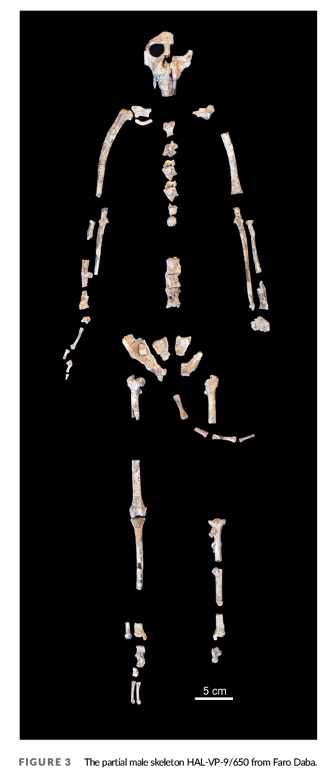
Several papers came out of our lab since the last newsletter. I led a major publication on the evolution of human pregnancy, published in the Proceedings of the National Academy of Sciences. It attracted a lot of media attention, both here in the US and abroad, and was a collaboration with researchers in Western’s Environmental Sciences Department, as well as at the Berkeley Geochronology Center and the National Center for Human Evolution in Spain (CENIEH). I also published four papers on monkey fossils, including three that describe 1,000 new fossils from Ethiopia. It was an incredible feat building from our work in Addis Ababa in 2017 and 2019, and it’s great to see them out and in circulation!
Classes have also been going well. It has been really rewarding to see students working with the new 3D scanner. It was a huge success in ANTH 420 Human Osteology, where students practiced using the scanner with materials in the lab. Tristen and Kelsey, two grad students in the Department, also used the scanner for a very interesting project on culturally modified trees. I can’t wait to see what other cool research comes from this impressive piece of technology (and our even more impressive students!).
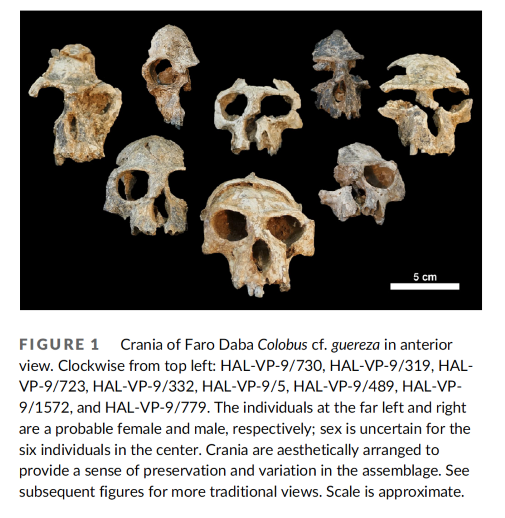
I am also looking forward to my classes in Winter and Spring quarters - I am teaching two new courses for the first time. One is a class on human evolution in science-fiction literature, taught in the Honors College. And the other is a brand new course in Anthropology – ANTH 320 Skeletons and the Occult. In other exciting curriculum news, we have been working to revise the major requirements for the BioAnth BA/BS and the Biocultural BA – check back next year to learn more about our new and improved major tracks!
All in all, there has been a lot going on, and there is even more on the horizon. I am very excited to think about where the Department will be in 5-10 years. We are at a crucial point of defining and building our future as a Department and a discipline. And I am very grateful to be part of it. Thank you all for joining us on this adventure! Here’s to another year, WWU Anthro!
The last year has been a whirlwind. The transition from the pandemic is finally starting to feel real. With students and faculty back on campus, reforging social networks has been a uniquely daunting task. Having the opportunity to help each other, exchange ideas, and be a part of a community has made me realize how much we lost over the last few years. While reforming social bonds has been a challenge, our departmental community that has recrystallized over the last few months into something special.
of the x̌ʷiq̓ʷix̌ʷalqʷuʔ (Blue Water) Archaeological Project
In the past year I was honored to be involved in a new collaboration with the Stillaguamish Tribe of Indians. The x̌ʷiq̓ʷix̌ʷalqʷuʔ (Blue Water) Archaeological Project is a community-based participatory research program designed to reorient archaeological practice to address the concerns of indigenous communities and promote greater inclusiveness in perspectives, accessibility, and representation in our field. I serve as a co-director with three colleagues from the Stillaguamish Tribe Cultural Department. The formation of this project involved the reorientation of the WWU Archaeological Field School as an Indigenous-led program centered on local knowledge, tribal research priorities, capacity building, and promotion of unmitigated Indigenous sovereignty over intellectual property. The first season of this new partnership was an unmitigated success, and we will build on the foundation created this summer in 2023 and beyond.
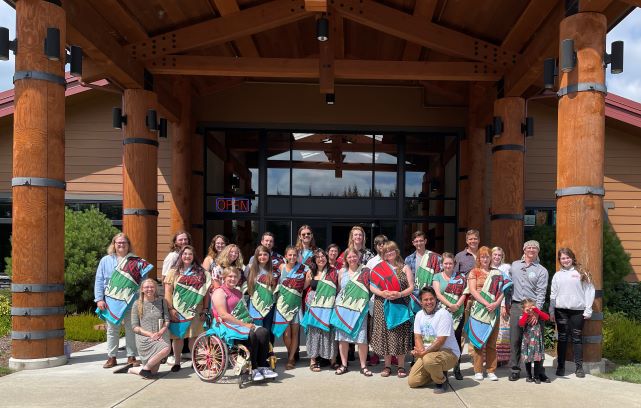
of the x̌ʷiq̓ʷix̌ʷalqʷuʔ (Blue Water) Archaeological Project
The goals of the x̌ʷiq̓ʷix̌ʷalqʷuʔ Project are ambitious: to realize the potential for community-based participatory research to transform institutions. The research goals of the project center on the interests of indigenous members of the project and the broader tribal community, including environmental stewardship, community organization, and relationships with the landscape from time immemorial. The project contributes to broadening access for underrepresented groups in roles ranging from project leadership, professional training programs, community outreach, and tribal youth programs, and is one of the only archaeological programs in the country that can accommodate participants with disabilities. For the 2023 season we are working to create accessible pathways for participation of an even broader group of students and participants.
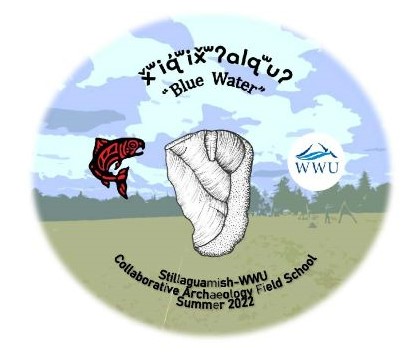
Archaeological Project Logo
Anthropology has had a diversity problem rooted in the colonial origins of the discipline, and the goal of the x̌ʷiq̓ʷix̌ʷalqʷuʔ is to actively contribute to a new direction in the field. I cannot sufficiently express my gratitude to the Stillaguamish Tribe for their generosity in sharing their culture and history. Participating in the x̌ʷiq̓ʷix̌ʷalqʷuʔ Project has been the most rewarding experience in my career.
The beginnings of this new project overlap with the final phases of a long-term regional research project in the Maya Lowlands. The last field seasons of the Proyecto Arqueológico Champotón focus on chronological refinement to address lingering questions regarding the sequence and interrelationships between political, economic, social, and ecological dynamics documented by the project over three thousand years of human occupation in the Río Champotón watershed. Research conducted last summer focused on ground verification and mapping of undocumented cities identified from satellite imagery that are today located in extremely remote locations.

Campeche, Mexico. Proyecto Arqueológico Uxte’tuun.
The final phase of fieldwork for this project will include an academic element (focusing on refinement of archaeological chronologies to facilitate more precise correlations between archaeological, epigraphic, historic, and paleoenvironmental datasets) and a community-based component. The x̌ʷiq̓ʷix̌ʷalqʷuʔ Project has heavily influenced my approach to community interactions. This is embodied in new relationships and collaborations with a local museum that opened this winter and community-based participatory research with students and faculty from a primary and secondary school in the town of Champotón.
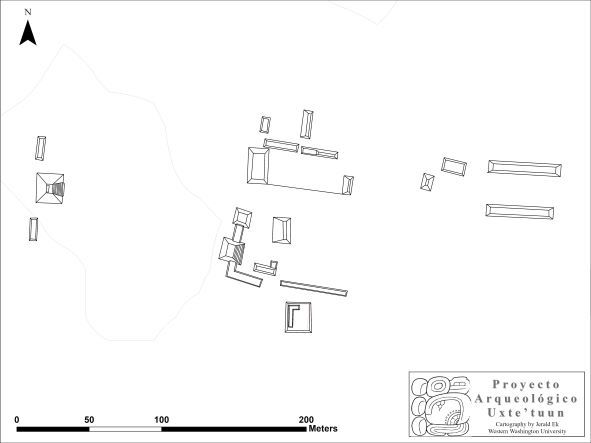
Campeche, Mexico. Proyecto Arqueológico Uxte’tuun.
As my research focus has shifted from Mesoamerica to the Salish Sea, I’ve taken on a more active role in the local professional community. The x̌ʷiq̓ʷix̌ʷalqʷuʔ Project includes outreach and collaboration with a wide range of institutions, including tribal governments, academic institutions, and government agencies and private companies active in cultural resource management. I recently accepted a position on the Board of Directors for the Association of Washington Archaeology. I’ve also been active as a board member in the AWA Mentorship Program and served as a mentor to help students and early-career professionals find success in the field. I’ve also taken over as director of the Northwest Region Chapter of the AWA, and we have plans for a series of social and professional events in the next year. This group has been particularly effective in creating relationships between students, academics, and professionals in all sectors of archaeology over the last decade, and I hope we can sustain and build upon this history of success in coming years.

I look forward to teaching in Anthropology for the first time in nearly five years. I earned my PhD in Anthropology from Washington University in St. Louis, but I often teach in Biology, which is where I have been teaching since I last taught in Anthropology. Since then, I have published on another new species of tarsier, a student master’s thesis on tarsier genetics, a book chapter on tarsier behavior, another book chapter on tarsiers in mangrove (with Western anthropology students Blair Kaufer and Steven Stillwell, and our beloved Professor Joan Stevenson!), an overview of the conservation disaster facing Sulawesi, and have had more IUCN Red List threat assessments published than I can accurately remember without looking it up. At one point the Primate Specialist Group had assigned 26 assessments to me, which amounted to all of the tarsiers and all of the Sulawesi macaques. But several years elapsed between the Asian Primate Specialist Group Workshop in Singapore in 2015 and when the new assessments were finally published, and I don’t keep a mental tally of what all my name wound up on.
COVID was an exciting time for my research team, as I learned that I could direct a team of Indonesian scientists to survey the island of Sulawesi by using WhatsApp! The survey is complete and awaits analysis. I have an Indonesian PhD student working on some of those data. I plan to offer a field course to Indonesia this summer. Please reach out if you think you’d like to join us. I’ll be teaching Anth 350 Ecology of Human Variation and Anth 422 Nutritional Anthropology in Winter, and Anth 350 Ecology of Human Variation and Anth 426 Human Genetics & Epigenetics in Spring. See you soon!


